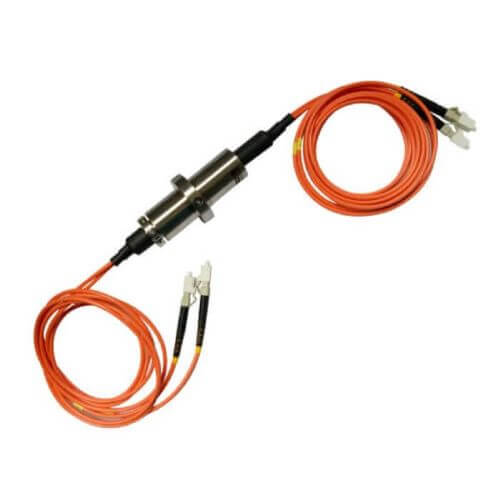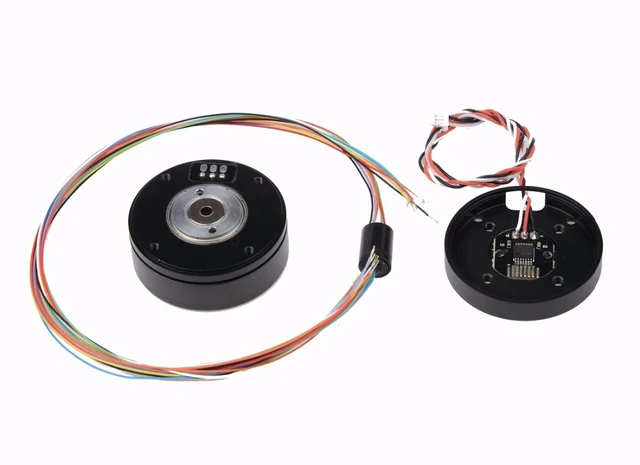Gimbal slip rings are vital components in a myriad of industries, from aerospace to robotics, yet their importance remains largely underappreciated. In this in-depth article, we intend to bring to light the significance of these devices, demystifying their operational principles, structure, characteristics, unique features, and considerable benefits.
Regardless of whether you are a professional in the field seeking further knowledge, or a curious enthusiast, this guide will cater to your needs. Beyond the basics, we also delve into the practical applications of Gimbal Slip Rings in various domains, factors to consider for selection, and guide to their installation and maintenance procedures. Further, we take a gaze into the future, evaluating current technological advancements and potential trends relating to slip ring gimbal.
We welcome you to join us in this enriching exploration, taking this opportunity to elevate your understanding of Gimble Slip Rings.
Gimbal Slip Rings: Overview
Background Information on Gimbal Slip Rings
Gimbal slip rings, often overlooked yet integral instruments, occupy a central role in the seamless operation of many electronics. Tracing the roots of these devices, they have emerged as a critical technological invention that has accompanied the evolution of electronics and digital devices over the decades.
Physically, a gimbal slip ring is a mechanical device that allows the transmission of power and electrical signals from a stationary structure to a rotating one. Its ingenious design is built upon the basic slip ring structure, integrating a gimbal (a pivoted support that allows rotation of an object about a single axis), hence carrying the moniker ‘gimbal slip ring’.
The Purpose and Relevance of Gimbal Slip Rings
Gimbal Slip Rings serve a dual function: not only do they allow for uninterrupted electrical connection, but they also facilitate the rotation of the structures they are integrated within. This functionality is unparalleled in many high-precision, high-tech fields – from robotics, and medical equipment, to the burgeoning field of renewables.
By allowing a continuous connection while in motion, gimbal slip rings have revolutionized various applications. For example, in wind turbines, these slip rings provide reliable transmission of power and data signals from the movable wind turbine blades to the stationary structure, allowing the turbine to rotate continuously in response to changing wind directions.
In short, the role of gimbal slip rings in the modern electronic and digital world is both critical and wide-reaching. The simple, yet highly specialized functionality of gimbal slip rings, is a testament to their importance in a realm where efficient power and data transmission is paramount. Hence, understanding their workings, potential applications, as well as their benefits, goes a long way towards appreciating their role in various industries and applications.
Gimbal Slip Rings: Understanding the Basics
What is a Gimbal Slip Ring?
A Gimbal Slip Ring is an electromechanical device that assists with connecting a stationary system to a rotating one. Specifically, the device transmits electrical signals and power across a rotating interface with the help of sliding electrical contacts, which are typically constituted by a stationary brush (or wiper) and a rotating ring.
How Does a Gimbal Slip Ring Work?
The operational mechanism of a Gimbal Slip Ring is ingenious yet straightforward. When the ring part of the device rotates, the stationary brush maintains continual contact with the ring’s surface, thereby ensuring an uninterrupted transmission of electrical signals or power. Added to this basic structure is a gimbal, a pivoted support allowing for rotation about a single axis]. The combination of these elements results in a system that provides continuous connectivity while enabling rotation of the structure it is fitted into, allowing it to function efficiently across a range of applications.
Types of Gimbal Slip Rings
In the world of gimbal slip rings, the applications and requirements are as diverse as the slip rings themselves. Different applications call for a variety of designs, each with its specific functionalities. Here are a few popular types of gimbal slip rings:
High-Frequency Gimbal Slip Rings
As transmission of data and signals at high frequencies becomes increasingly crucial in multiple sectors, including telecommunications, broadcasting, and radar systems, high-frequency gimbal slip rings have gained popularity. They are designed to transmit signals at high frequencies without significant loss and maintain a low noise level.
Capsule Gimbal Slip Rings
Capsule gimbal slip rings are identified for their compact and cylindrical shape akin to a capsule. They are used when space restrictions are involved and still ensure stable and efficient transmission of data and signals. Common applications include CCTV cameras, automated equipment, and video surveillance systems.
Pancake Gimbal Slip Rings
Pancake gimbal slip rings are characterized by their flat, disk-like shape. They support directionality and are often utilized for high-precision gadgets and equipment. The discreet design allows for signal and power transmission through a horizontal rotational plane, making them ideal for applications where height is a limiting factor.
Ethernet Gimbal Slip Rings
In the modern digital era, the rise of network technologies has popularized Ethernet gimbal slip rings. They are specialized for transmitting Ethernet signals in continuous rotation applications. Ethernet slip rings offer high-speed data transmission, often found in devices requiring swift and stable network connections such as network cameras and robotic systems.
Making an informed choice with the right type of gimbal slip ring becomes integral to ensuring efficient performance in any device or application. Each of these types offers unique features that cater to different industry needs and application specifications.
Gimbal Slip Rings: Key Components and Characteristics
Understanding the internal structure, components, and characteristics of gimbal slip rings is essential to comprehending their functionality, application, and selection.
The Structure of Gimbal Slip Rings
Gimbal slip rings consist of several key components:
- Ring: This is the primary component that rotates, usually made of conductive materials such as copper alloys.
- Brush: The brush maintains electrical contact with the ring as it rotates. Often, it’s made out of precious metals to minimize resistance and prevent corrosion.
- Insulation Material: Separating the electrical components and preventing them from making unintentional contact.
- Bearings: These components aid in the smooth rotation of the slip ring.
- Housing: This outer cover protects the inner components from environmental elements.
Key Characteristics and Specifications
Gimbal slip rings possess various defining characteristics that make them suitable for different scenarios:
- Rotation Speed: This defines how fast the slip ring can rotate while maintaining reliable data and power transmission.
- Voltage and Current Ratings: Specifies the maximum voltage and current the device can safely handle.
- Number of Circuits: The number of independent electrical circuits that can pass through the slip ring simultaneously.
- Noise Level: A lower noise level is preferred for high-precision applications where signal integrity is crucial.
- Life Expectancy: How many rotations the device can withstand before expected failure.
- Environment Resistance: The slip ring’s ability to function in various environmental conditions, such as high/low temperatures, dust, or humidity.
Termination Types
The termination type refers to how the slip ring’s electrical connections are made available for interfacing with the system in which it’s integrated. There are mainly three types:
- Solder Terminals: These are often used in high-reliability applications as they provide a very secure connection.
- Plug-In Connectors: These allow quick and easy connection and disconnection. Suitable for applications where servicing and part replacement need to be done swiftly.
- Flying Leads: These are flexible wires. This type of termination is preferred where the installation space is limited or unusual angles are involved.
Understanding the significant components, specifications, and characteristics is crucial when selecting the right gimbal slip ring for specific applications. It ensures that the chosen slip ring can reliably maintain electrical connections while still meeting the application’s unique requirements.

Gimbal Slip Rings: Features
Distinguishing gimbal slip rings from the broader family of slip rings, it’s essential to identify their unique features and advantages.
Specific Features and their Functions
Gimbal slip rings are designed with certain specific features that enhance their functionality:
- Single-Axis Support: Unlike other slip rings, gimbal slip rings support rotation about a single axis, which is a crucial factor in enabling varied applications.
- Low Torque: The specific design of a gimbal slip ring ensures smooth rotation with minimal resistance, allowing stress-free operation even over long periods.
- Compact Size: Given space is often a limiting factor in many applications, gimbal slip rings are usually compact, and designed to operate efficiently even in limited space.
- High Capacity Data Transmission: Gimbal slip rings can handle the transmission of multiple data types (including digital and analog) simultaneously, which is especially critical in the age of digital communication.
- Rotation Flexibility: They are designed to function effectively with indefinite rotations, extending their functionality to applications that require unlimited spinning.
Comparing Gimbal Slip Rings with Other Slip Ring Types
Comparing gimbal slip rings with other types of slip rings highlights the uniqueness of their functionality and design:
- Rotation Axis: Unlike other slip rings that might support multi-axis rotations, gimbal slip rings support single-axis rotation, making them particularly suited for certain applications.
- Flexibility: Gimbal slip rings typically offer higher rotational flexibility. They are designed to handle indefinite rotations, as opposed to certain other slip ring types limited to a fixed degree of rotation.
- Size and Design: While some slip ring types like pancake slip rings are inherently flat and disk-shaped, gimbal slip rings commonly exhibit a compact design, optimizing their functionality in space-restricted environments.
- Data Transmission: Not all slip ring types can handle high-capacity data transmission. Gimbal slip rings, however, excel in this aspect, making them ideal choices for multi-signal, high-data applications.
Overall, gimbal slip rings exhibit certain distinct characteristics and features that set them apart from other members of the slip ring family. Understanding these features and the underlying functionality can be invaluable when selecting the right slip ring for a specific application.
Gimbal Slip Rings: Benefits of Using
Choosing to use a Gimbal Slip Ring over other slip ring types or alternatives can offer some significant advantages, which we’ll explore below.
Enhanced Performance
Gimbal slip rings offer a marked improvement in performance for various applications:
- Improved Data Transmission: By providing continuous data and power transmission, they ensure operational excellence in devices. This feature can be particularly crucial in applications such as radar systems or satellite communication, where data loss can lead to major problems.
- Smooth Operation: The design of Gimbal Slip Rings minimizes mechanical friction, offering smoother operation and less wear and tear. This can lead to a longer lifespan for devices, minimizing the need for constant replacements.
- Adaptability to Different Environments: Design features such as robust housing and high-quality insulation materials allow Gimbal Slip Rings to function effectively under various environmental conditions, be it high or low temperatures, dust, or high humidity.
Increased Flexibility
Gimbal Slip Rings offer increased flexibility making them adaptable to a wide range of applications:
- Compact Design: Space is often a limiting factor in the design of many devices, and Gimbal Slip Rings with their compact size can be integrated into systems where space is a premium.
- Unlimited Rotation: They allow devices to rotate an unlimited number of times about one axis, a feature that can be a game-changer in applications where unlimited or extensive rotation is required.
- Multiple Channels: The ability to simultaneously transmit different types of signals (both analog and digital) and power makes them a flexible choice in numerous applications.
Improved Reliability
Gimbal Slip Rings provide improved reliability, which can be a vital advantage in numerous applications:
- Long Lifespan: High-quality materials, coupled with a design that minimizes friction, give this slip rings a longer lifespan than many other alternatives.
- Low Maintenance: Given their robust construction and minimal wear and tear, Gimbal Slip Rings require less maintenance, saving costs and time in the long run.
- Consistent Performance: By allowing continuous electrical connection, they provide consistent performance, helping to avoid potential device failings due to unintentional disconnections.
In conclusion, the benefits of using Gimbal Slip Rings stem from their enhanced performance, increased flexibility, and improved reliability. Understanding these benefits is crucial in determining whether they are the right fit for a given application.
Gimbal Slip Rings: Applications
Gimbal slip rings are versatile components, finding use across a wide range of industries due to their high performance and reliability.
Industry Applications
Gimbal slip rings are commonly used in many industries, including:
- Medical Equipment: In devices like CT scanners, gimbal slip rings provide continuous power and signal transmission during rotation.
- Wind Energy: Wind turbines, transfer power and signals from the rotating blades to the static tower.
- Maritime Applications: They are used in various rotating radar systems, sonar systems, and communication systems on ships.
- Automation: In manufacturing and processing industries, gimbal slip rings can be found in packaging machines, bottling machines, and other rotating equipment.
Gimbal Slip Rings in Aerospace
In the aerospace sector, gimbal slip rings play a critical role.
- Satellite Communication: They provide seamless data transition in satellite communication where signals need to be transmitted during the continuous rotation.
- Aircraft Systems: In aircraft, they are used in radar systems, navigation systems, and communication systems.
- Space Missions: They are vital for space probes and rovers where continuous rotation and data transmission are required.
Gimbal Slip Rings in Military Equipment
Gimbal slip rings find extensive use in cutting-edge military equipment.
- Radar Systems: In ground-based or ship-based radar systems, they play a crucial role, in enabling the radar’s rotational motion and continuous signal transmission.
- Weapon Systems: For turret rotation or missile launching systems, gimbal slip rings provide the necessary signal and power connections.
- Naval Equipment: For underwater communication systems and sonar systems, they ensure smooth operation.
Gimbal Slip Rings in Robotics
The use of gimbal slip rings in robotics is significant, given the high demand for continuous motion and operation in this field.
- Industrial Robots: In automated manufacturing, they are used to provide reliable power and signal transmission.
- Service Robots: In healthcare or hospitality service robots, allow for precise, unrestricted movement.
- Research Robots: This includes underwater or space exploration robots where 360-degree rotation and data transmission are crucial.

To sum up, from everyday industrial applications to specialized aerospace and military usage, gimbal slip rings are a ubiquitous component thanks to their adaptability, reliability, and ability to support operational efficiency across a wide range of applications.
Gimbal Slip Rings: Selecting
Choosing the correct gimbal slip ring for your application is not a one-size-fits-all solution. It’s crucial to consider various factors to ensure the chosen component meets the necessary performance and reliability standards.
Factors to Consider when Selecting a Gimbal Slip Ring
Several key factors should be considered when selecting a gimbal slip ring:
- Operating Environment: This includes temperature, humidity, dust, and potential exposure to corrosive materials. The choice should ideally be resistant to these external factors.
- Electrical Requirements: You need to consider the maximum voltage and current ratings, the number of circuits, and the type of signals (analog or digital) that will be passed through the slip ring.
- Mechanical Requirements: This involves rotation speed, life expectancy (number of rotations), size, and weight of the slip ring. The selected product should satisfy the mechanical constraints of the application.
- Connection Interface: The type of termination (solder terminals, plug-in connectors, flying leads) should align with the requirements for ease of installation and potential maintenance.
- Regulatory Compliance: The slip ring should comply with all applicable regulations and standards in your industry.
Common Pitfalls to Avoid
It’s important to avoid certain common mistakes when selecting a gimbal slip ring:
- Overlooking Application Specific Needs: Not all gimbal slip rings are created equal – a slip ring appropriate for a wind turbine may not be the ideal choice for a CT scanner. Understand the specific needs of your application first.
- Enforcing Price Over Quality: While it may be tempting to choose the cheapest option, keep in mind that this can often lead to performance issues and increased maintenance costs down the line. Invest in a high-quality product from a reputable manufacturer.
- Neglecting Manufacturer Support: Technical support from the manufacturer can be invaluable for addressing any issues that arise during the slip ring’s life. Choose a manufacturer known for good customer service.
In conclusion, selecting the correct gimbal slip ring requires some due diligence considering the requirements of the application and the product’s characteristics. Attention should also be paid to avoid pitfalls that could lead to unfortunate consequences later.
Gimbal Slip Rings: Installation and Maintenance
The effectiveness of a gimbal slip ring is significantly influenced by its proper installation and maintenance. Here, we discuss some of the necessities you should be aware of when installing and maintaining gimbal slip rings.
Installation Procedures
While specific installation procedures may vary depending on the type and model of the gimbal slip ring, the following general steps can be applied:
- System Preparation: This involves shutting down and disconnecting the equipment from the power source, followed by disassembling the necessary portions of the system to make room for the slip ring.
- Slip Ring Fitting: Care should be taken to properly align and secure the slip ring according to the manufacturer’s instructions considering its orientation and connection interface.
- Connection Establishment: Wiring the slip ring to a power source and signal transmitters/receivers should be done ensuring correct wire-color pairing and routing, based on provided diagrams or instructions.
- Testing: Lastly, conducting post-installation checks or tests to confirm it’s performing correctly and efficiently is essential.
Basic Troubleshooting
Implementing basic troubleshooting steps can help quickly identify and resolve many common issues:
- Checking Connections: Loose connections can often cause inconsistent performance or complete failure. Ensure all connections are secure.
- Verifying Electrical Ratings: Using a multimeter, verify that the operating voltage and current are within the slip ring’s specified parameters.
- Inspecting Physical Components: Visually inspect the slip ring for any physical damage or wear.
Maintenance Tips and Best Practices
Gimbal slip ring maintenance involves a series of tasks that help ensure continuous high performance:
- Regular Cleaning: Cosmetic or light cleaning can prevent dirt or dust build-up which could damage the sliding contacts over time.
- Check Electrical Characteristics: Using a multimeter, periodically verify electrical characteristics to ensure they align with the product’s specifications.
- Schedule Inspections: Regular visual inspections can help identify potential wear or damage early and replace parts as necessary.
Dealing with Common Problems
Dealing with common problems effectively can help improve the lifespan of a gimbal slip ring:
- Intermittent Signal: This could be due to worn-out contacts requiring replacement, or illy-fitted connections needing proper installation.
- Decreased Performance over Time: This might be due to dust build-up or component wear, solved by a regular cleaning or part replacement as necessary.
- Overheating: Often a result of overloading, this requires a reassessment of your voltage and current requirements.
In conclusion, a combination of proper installation, routine maintenance, and efficient troubleshooting can make all the difference in maximizing a gimbal slip ring’s lifespan and maintaining its high performance.
Have questions about our slip ring products? Fill out the form and we will respond promptly.
Gimbal Slip Rings: Advanced Topics
The field of gimbal slip ring technology is constantly innovating, with new advancements and future trends contributing to its development and enhancement.
Innovations in Gimbal Slip Ring Technology
Some of the latest innovations in this area include:
- Miniaturization: With the increased demand for small and precise devices, gimbal slip ring manufacturers are creating smaller versions that maintain or even increase the level of performance.
- Fiber Optic Slip Rings: These types of slip rings, also known as FORJs, offer high-speed data transmission and are especially useful for digital signals.
- Wireless Slip Rings: Some recent advancements have led to the development of contactless slip rings that use magnetic fields to transfer power and data, allowing for less wear and longer service life.
- Hybrid Slip Rings: As the name suggests, these slip rings offer a combination of different types of circuits (power, data, video, etc.) in a single unit, providing a multipurpose, space-saving solution.

Future Trends and Potentials
Looking towards the future, several trends and potentials in gimbal slip ring technology stand out:
- Smart Slip Rings: With the rise of Industry 4.0 and IoT, the development of smart slip rings equipped with sensors and diagnostics capabilities could yield valuable operational data and boost preventive maintenance efforts.
- Improved Materials and Design: Future slip rings might incorporate more advanced materials and design techniques, which can enhance performance, durability, and resistance against harsh environmental conditions.
- Specialized Slip Rings: As technology segments become more sophisticated and specialized, there may be greater demand for highly customized slip rings tailored to unique applications.
In conclusion, both the innovations in gimbal slip ring technology and the potential future trends reveal an exciting direction of development in this field, driving the expansion and diversification of its applications across various industries.
Gimbal Slip Rings: Further Resources
A wealth of resources exist for those who want to delve deeper into gimbal slip ring technology. These can enhance your understanding, keep you updated with industry trends, and help you make informed decisions.
Relevant Books, Articles, and Websites
Gaining knowledge from books, articles, and online portals on slip ring technology and applications can be immensely beneficial:
- Books: “Introduction to Electromagnetic Engineering” by Roger F. Harrington gives an overview of the electrical and electromagnetic fundamentals involved in slip ring technology.
- Articles: Scholarly journals such as “IEEE Transactions on Industrial Electronics” often have articles on the latest research and development in the slip ring sector.
- Websites: Websites like Engineers’ Edge and Electrical4U offer deeper insights into engineering concepts, including gimbal slip ring technology.
Top Manufacturers of Gimbal Slip Rings
Some prominent manufacturers in the helicopter slip rings market include:
| No. | Manufacturer | Website |
|---|---|---|
| 1 | Hangzhou Grand Technology | https://www.grandslipring.com/ |
| 2 | Moog Inc. | https://www.moog.com/ |
| 3 | Stemmann-Technik | https://www.stemmann.com/en/home |
| 4 | Schleifring | https://www.schleifring.com/ |
Hangzhou Grand Technology

Hangzhou Grand Technology Co., Ltd. started as a special slip ring manufacturer in 2011. Grown into slip rings, rotary joints, and slip ring assembly experts of today with 6,000 square meter manufacture complex.
Obtained ISO9001, Rosh, CE, and GJB9001B certificates a number of slip rings, rotary joint patents, and proud of our products can meet military grade. Collaborated with universities, institutes, and renowned factories across Asia and Europe including Panasonic, SIEMENS, CSIC, SAMSUNG, HUAWEI, etc.
Moog Inc.

Moog is a leading supplier of high-performance slip rings for various industries, including aerospace. Among their offerings, Moog’s SR Series Slip Rings are designed for the demanding environments of helicopters, excelling in performance, reliability, and customization potential.
Stemmann-Technik

Stemmann-Technik, a part of the Conductix-Wampfler Group, offers a broad range of slip rings, including solutions for helicopters. Their Livietta Slip Ring Assemblies are designed explicitly for harsh and demanding environments in the aviation sector, providing reliable signal and power transmission.
Schleifring

Schleifring is a well-known manufacturer of electromechanical systems, including slip rings customized for various industries. Their Aircraft Slip Rings cater specifically to helicopters, offering robust performance, low wear, and high reliability to meet the challenges of aviation applications.
In summary, the helicopter slip rings market is shaped by multiple players, factors, and technological advancements. Key manufacturers and their products play a critical role in addressing industry demands for high-quality, reliable, and customized slip ring solutions.
If you want to know more about other slip ring manufacturers, you can read Top 10 Slip Ring Manufacturers in China, Top 10 Slip Ring Manufacturers In the USA Market 2023, and Top 10 Slip Ring Industry Key Manufacturers 2023
Training and Development Opportunities
Training programs, crash courses, webinars, or seminars can provide hands-on experience. Moreover, attending relevant trade shows and expos can broaden your network while updating you about upcoming trends and technologies.
- Certifications: Certificates from valued institutions offer increased credibility. Look for certifications specific to electromechanical systems or equipment maintenance.
- Webinars and Training Sessions: Many manufacturers offer webinars and training sessions to understand their specific products better.
- Trade Shows and Expos: Events like the “Automate Trade Show” or the “International Conference on Electrical Machines and Systems” could provide valuable learning and networking opportunities.
In conclusion, these further resources can provide crucial aids to enhance your level of knowledge, skills, and connections, helping you stay updated and optimize your applications involving gimbal slip ring technology.
Conclusion
Reflecting on the information shared, it’s evident that the importance of gimbal slip rings to a wide range of industries and applications is profound. Let’s recap and share some final thoughts.
Recap of the Key Points
In this guide, we’ve covered several key topics related to gimbal slip rings, including:
- Understanding Gimbal Slip Rings: From their basic function, structure, benefits, and limitations, to the various types and their distinctive features.
- Applications of Gimbal Slip Rings: Highlighting the critical role they play in systems ranging from small electronic devices to heavy-duty industrial machinery.
- Selection Considerations: Pointers on factors to consider when choosing a slip ring and avoidance of common pitfalls.
- Installation and Maintenance: Guidance covering installation procedures, troubleshooting, maintenance best practices, and dealing with common issues.
- Advanced Topics: Briefing on the latest innovations, future trends, and potentials in gimbal slip ring technology.
- Further Resources: Providing relevant resources from literature and the web to professional training and manufacturing companies.
Final Thoughts
While understanding, choosing, and managing gimbal slip rings might seem daunting at first, equipped with the knowledge presented in this guide, you should feel confident in making informed decisions.
Keep in mind that every situation is unique and demands specific attention to individual requirements and constraints. Always strive to stay informed about these and future advancements in the field of gimbal slip ring technology, as this area continues to evolve and innovate.
As we come to the conclusion, remember that sustainability, reliability, and efficiency should always be at the forefront while dealing with any technology, and gimbal slip rings are no exception. Investing in knowledge, precaution, and quality will undoubtedly pay off in the long run.
FAQs about Gimbal Slip Rings
To round off this guide, we’ll address some Frequently Asked Questions regarding gimbal slip rings. These queries and their answers will provide a further understanding of the topic.
Q: What are Some Common Applications of Gimbal Slip Rings?
A: Gimbal slip rings are extensively used in numerous fields such as aerospace, maritime, heavy-duty industrial machinery, and surveillance systems. They are integral parts of devices like revolute joints in robots, rotary tables, radar systems, and more.
Q: How Long Does a Gimbal Slip Ring Last?
A: The lifespan of a gimbal slip ring highly depends on multiple factors, including the type of slip ring, its material composition, quality of build, environmental factors, the electrical load it is subjected to, and the frequency and quality of maintenance.
Q: How Can I Extend the Lifespan of My Gimbal Slip Ring?
A: To extend the lifespan of your slip ring:
- Adhere strictly to instructions for installation, operation, and maintenance from the manufacturer.
- Ensure it operates within the rated electrical and environmental parameters.
- Regularly clean and inspect to detect and rectify faults early.
- Use quality cables and connectors.
Q: What are the Latest Innovations in Gimbal Slip Ring Technology?
A: Recent advancements in the field involve innovations such as miniaturization, fiber optic slip rings for high-speed data transmission, wireless or contactless slip rings for reducing wear, and hybrid slip rings combining different circuit types.
In conclusion, we hope this FAQ section provides additional clarity about gimbal slip ring technology and how to get the best performance out of them. Don’t be afraid to reach out to slip ring manufacturers or experts if you have more specific questions – after all, knowledge is key!
Ready to learn more about our slip rings? Complete the form below to get started.


